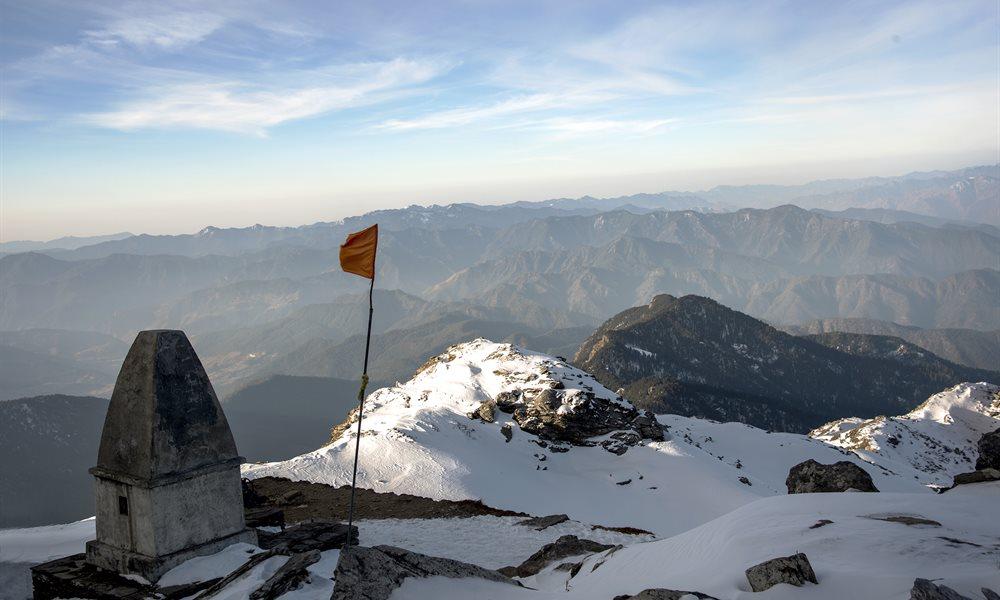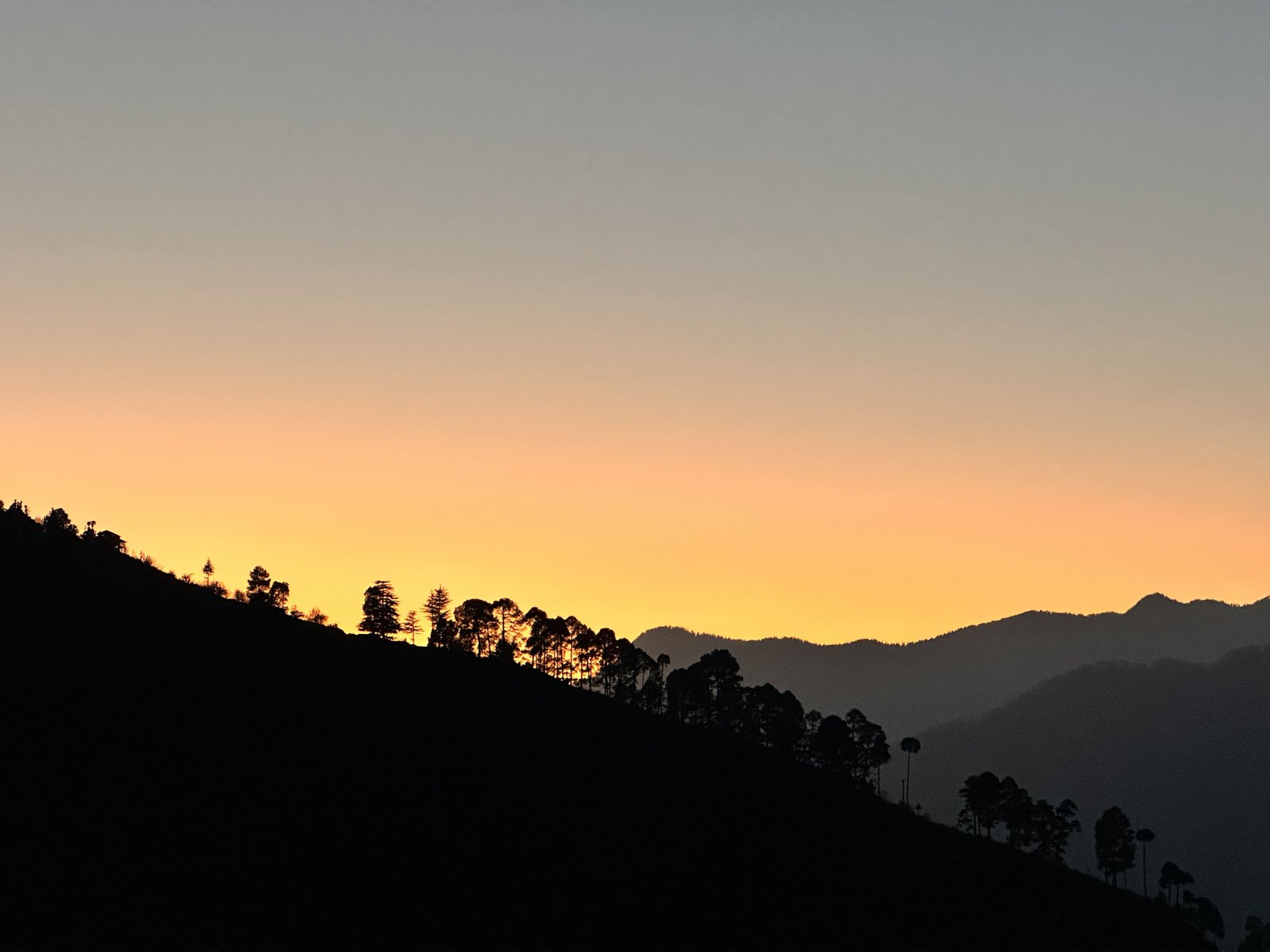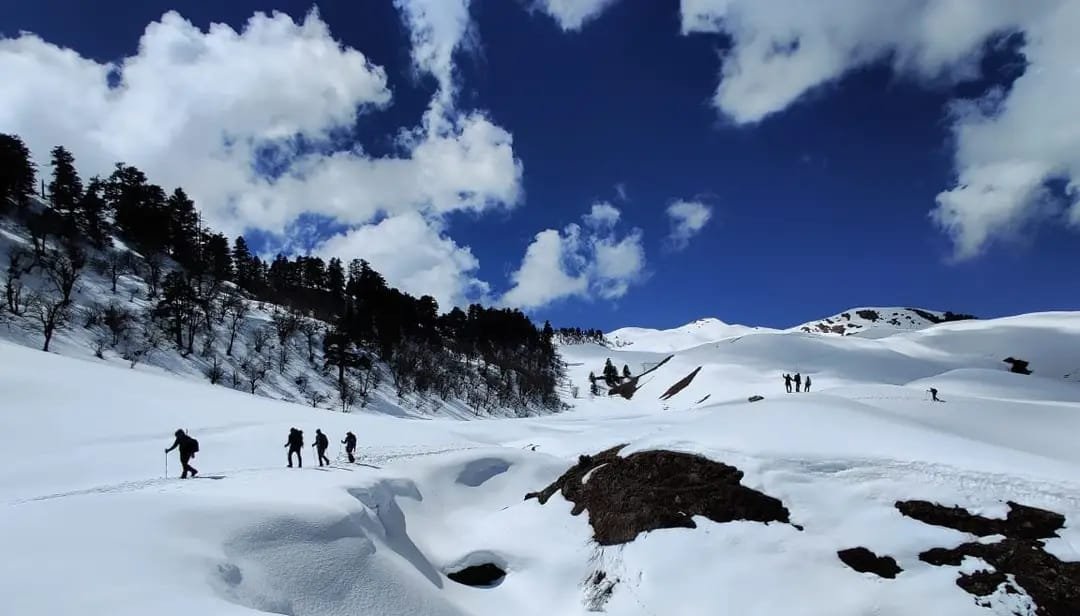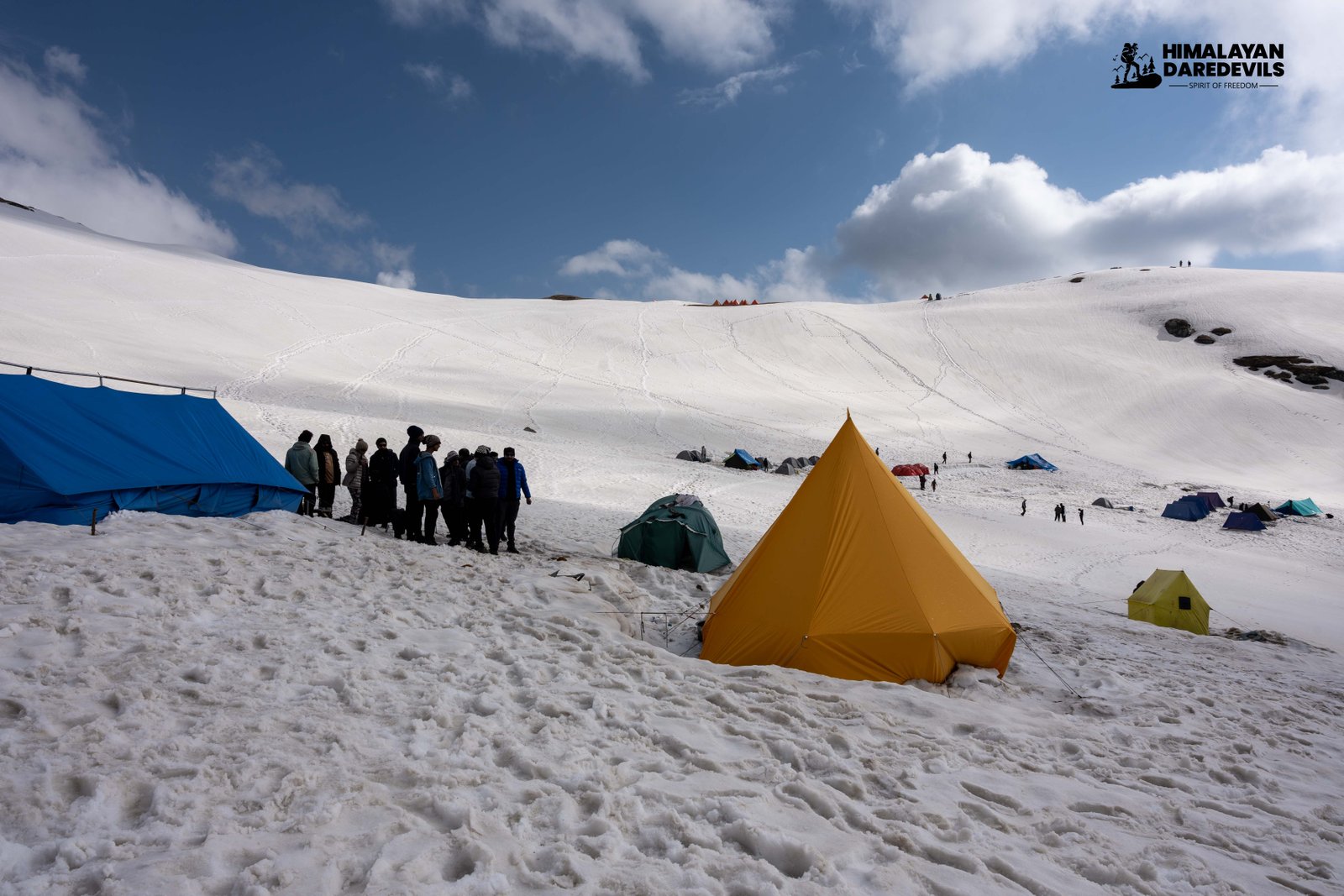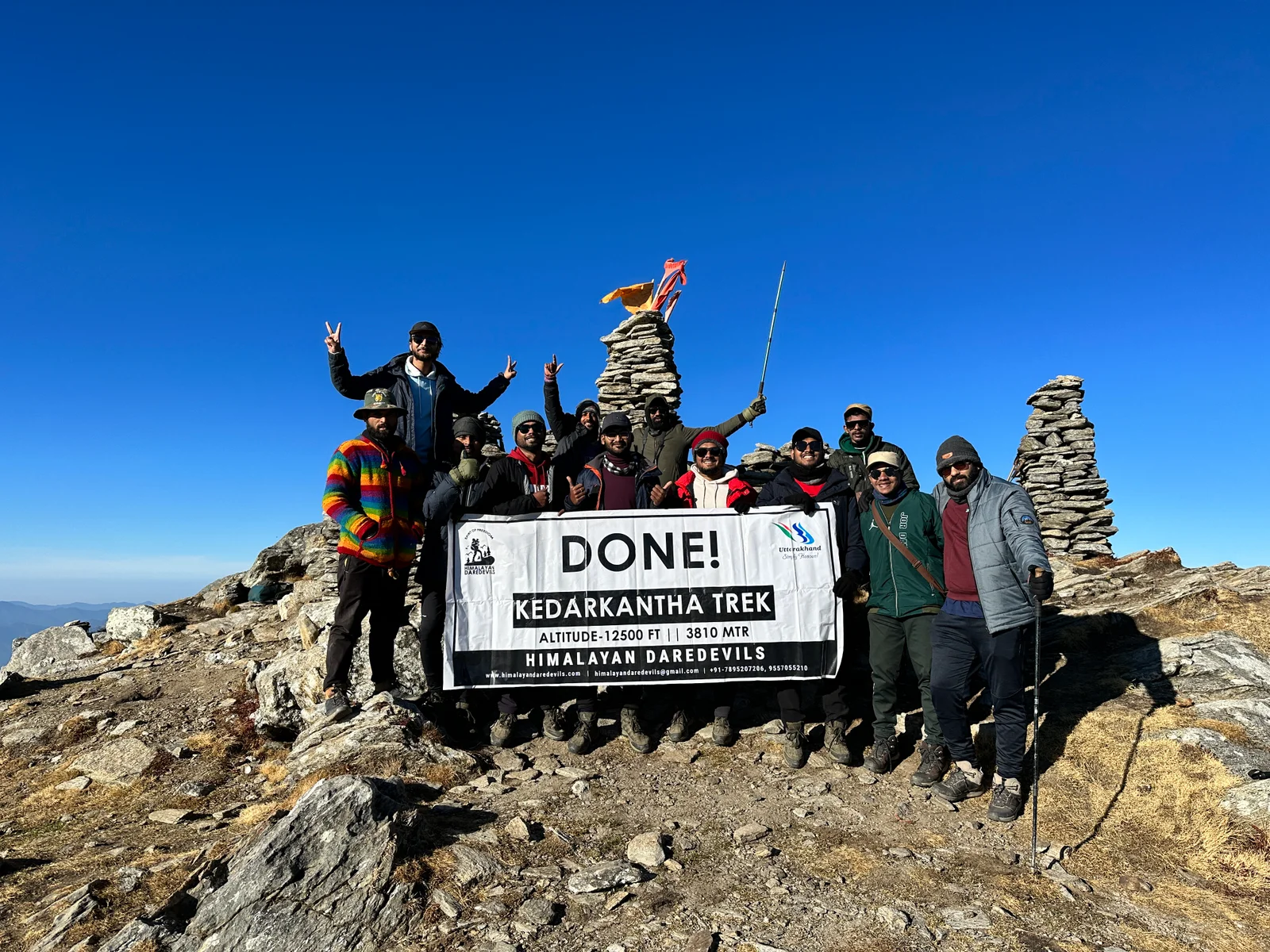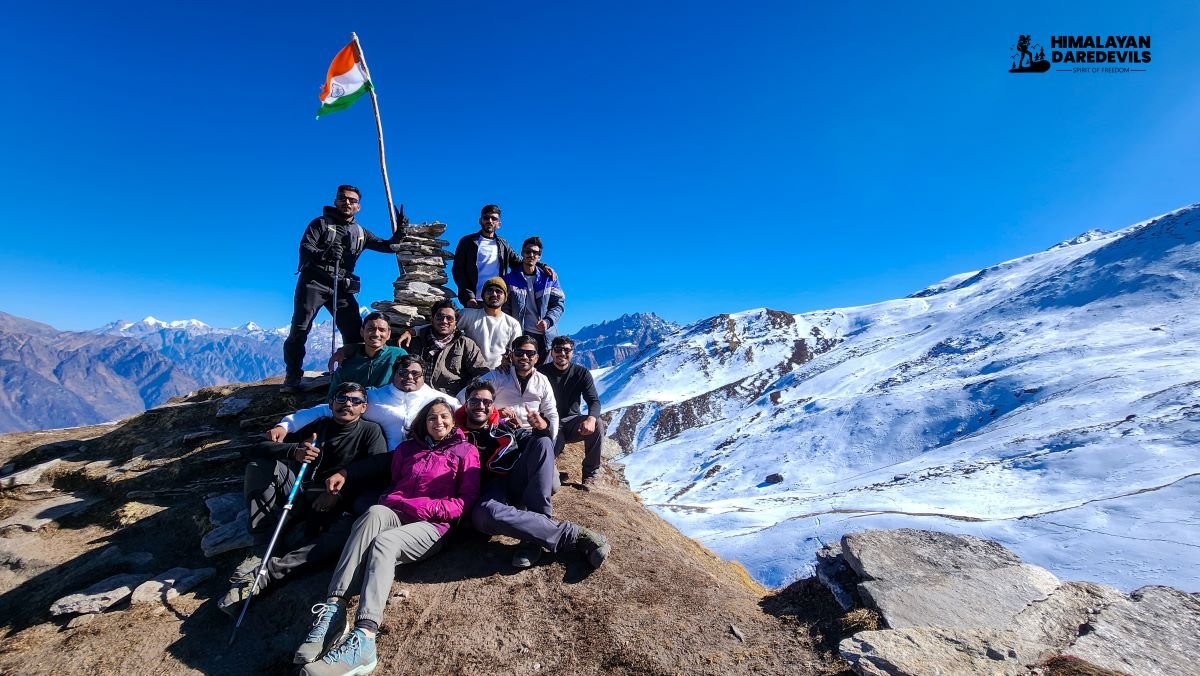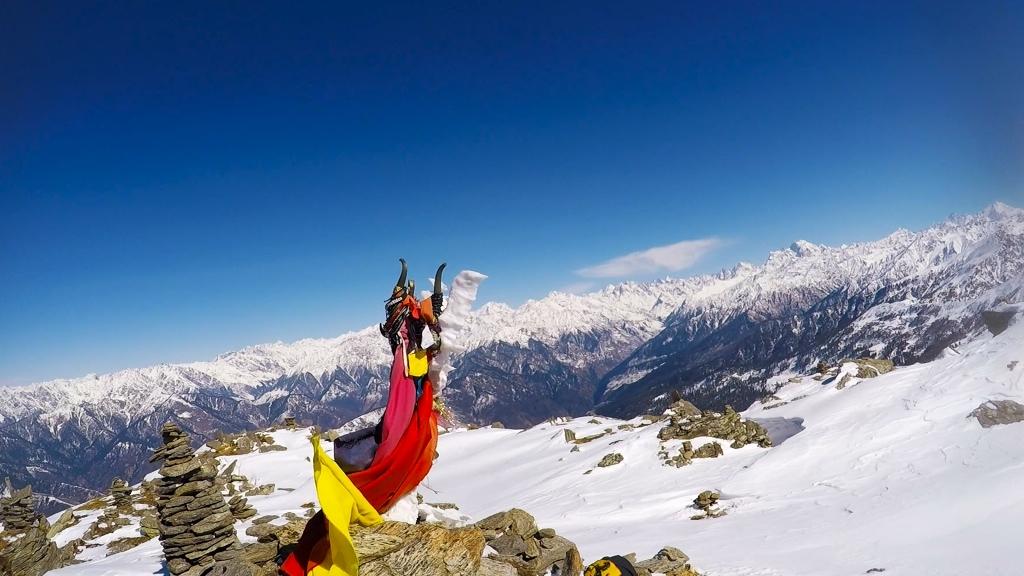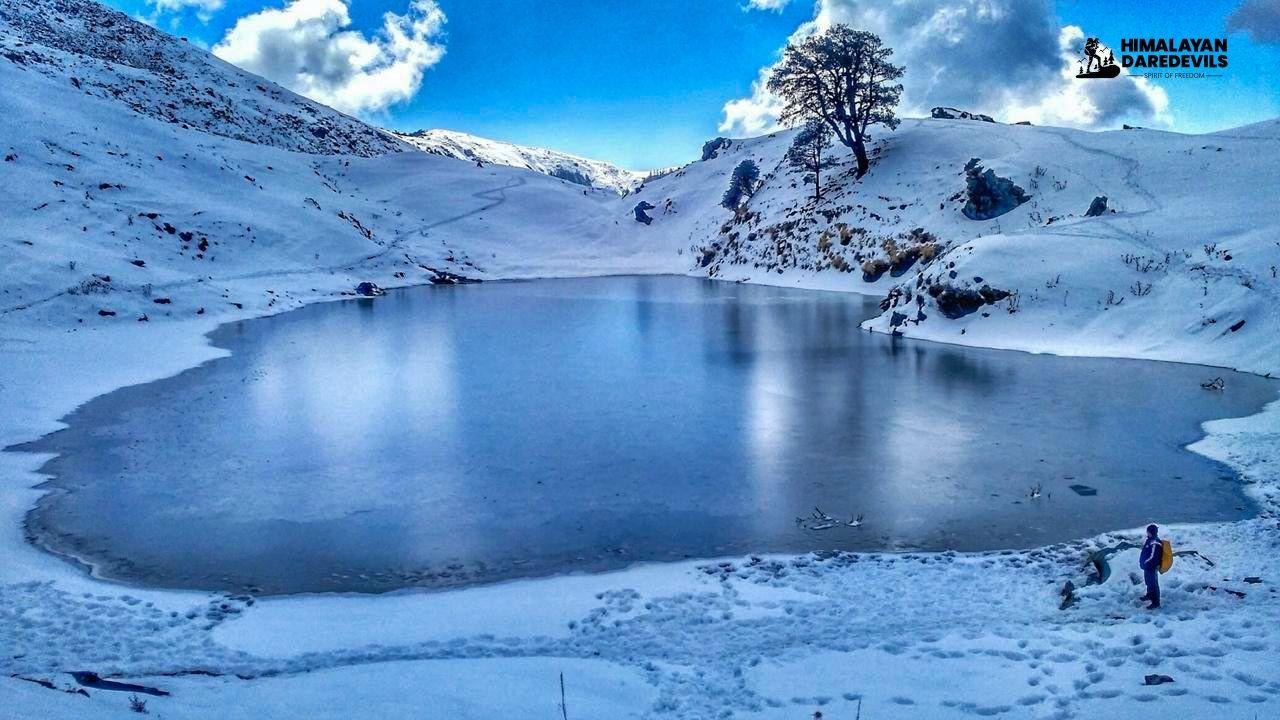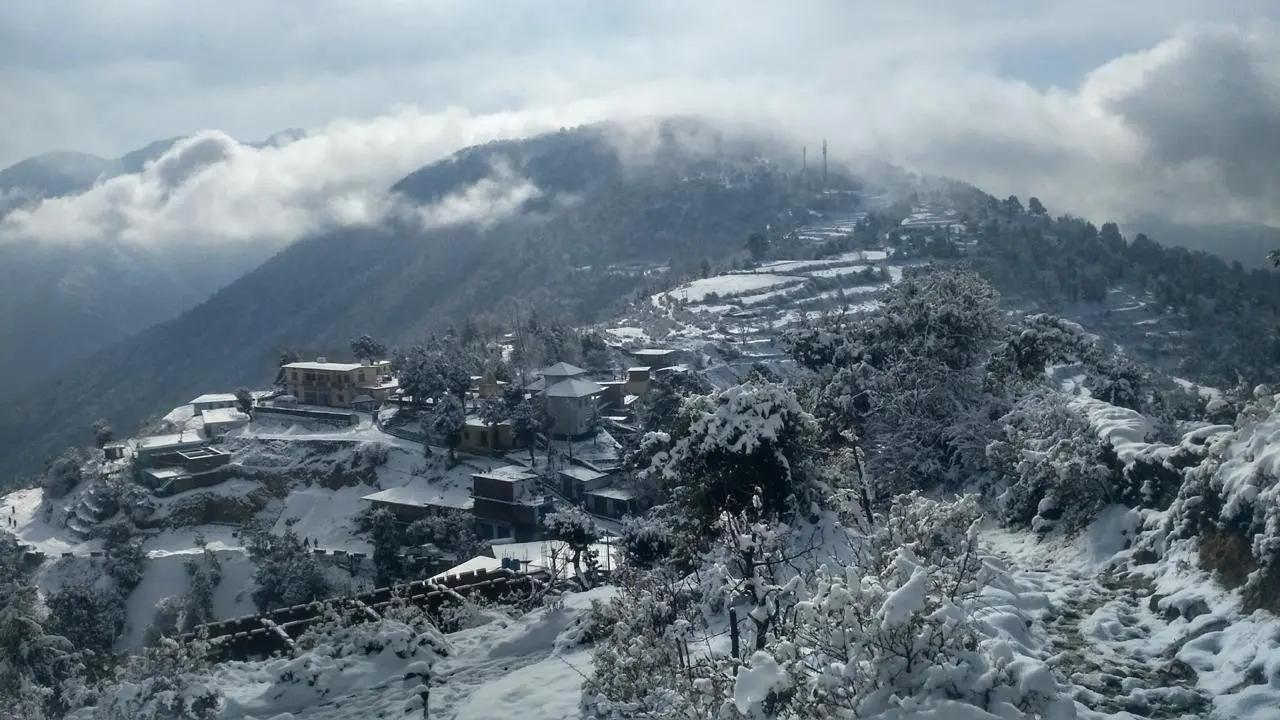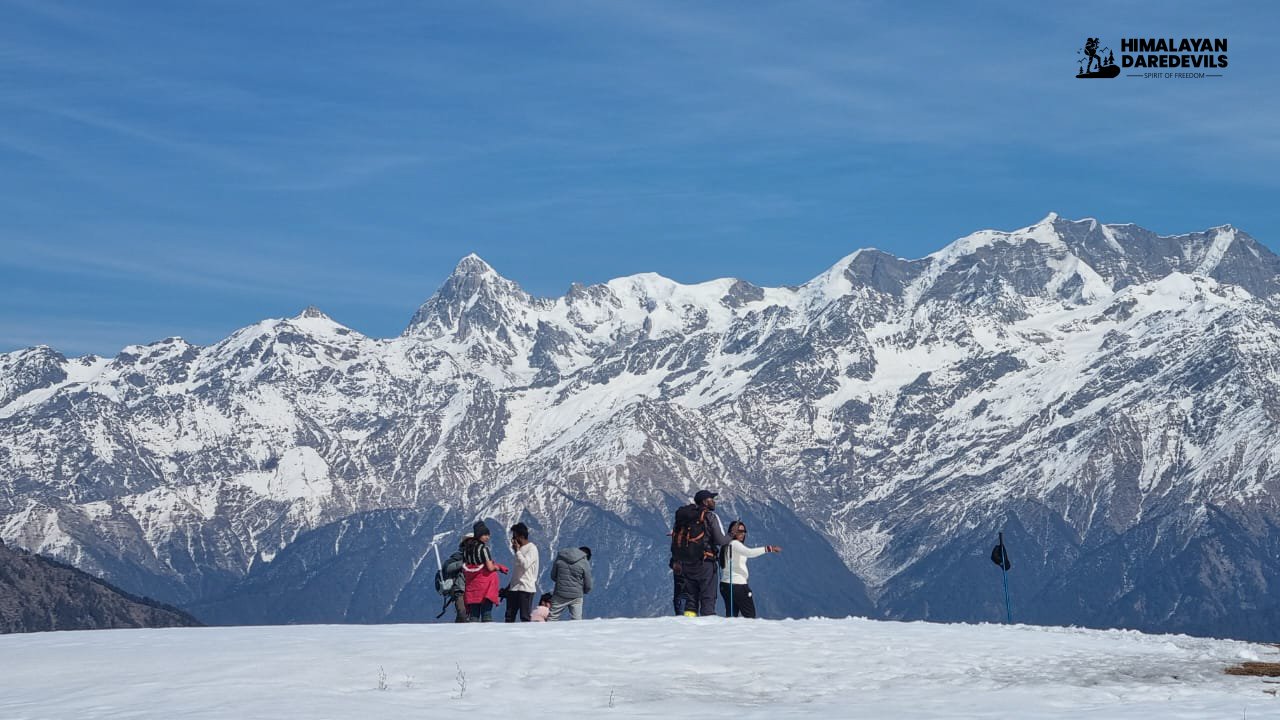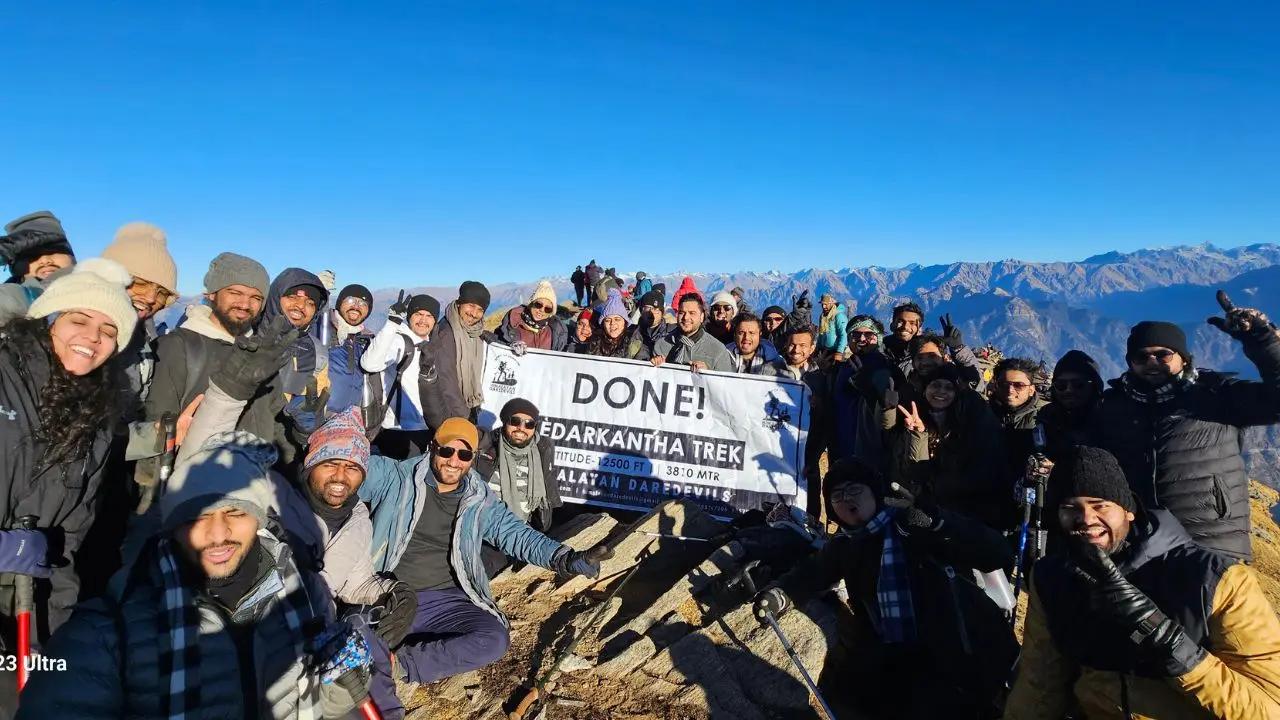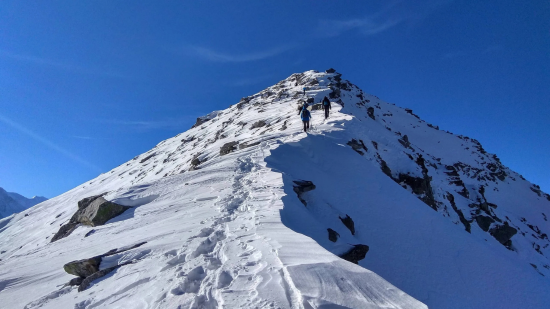09 October 2025
Kedarkantha Trek is one of India's most popular winter and beginner-friendly Himalayan Treks. On this trek the gentle slopes take you to stunning locations reaching to a stunning altitude of 12,500 feet (3,810 meters). Kedarkantha is the part of Uttarakhand’s Govind Pashu Vihar National Park and Kedarkantha Trek difficulty is generally rated as easy to moderate, where factors like weather, terrain, and altitude can influence the experience. To experience the unique charm of the Trek you must visit it in the winter months, the time when you get to navigate through deep snow, icy slopes, and sub-zero temperatures, making it more challenging and rewarding.
How Difficult is the Kedarkantha Trek?
Difficulty Level of Kedarkantha Trek is generally rated as easy to moderate,it is ideal for first-time trekkers with a basic level of fitness. The aim of the journey is to reach the Highest point of the Kedarkantha Trek and the trail to reach there is filled with gradual ascents through forests and meadows, the final summit climb can seem challenging to some of the beginners because of the snow and the steepness but that is what makes this trek memorable. Here are the things that affect the difficulty of the Kedarkantha Trek:
1. Weather Conditions and Seasonal Challenges
The Kedarkantha Trek weather varies greatly with each season
Winter (December-April): Snow-covered Trails, Sub-zero temperatures, and strong winds add to the adventure of the trek. To tackle these challenges the Trekkers must special gear like snow boots, layered clothing and carry microspikes for better grip in the slippery snow trails.
Spring and Autumn: Spring and autumn is the time of milder weather, clearer skies and stable conditions making it an ideal season to trek to Kedarkantha.
Monsoon (July-August): It is not recommended to trek to the mountains during the rainy seasons. The trail becomes slippery due to rain, increasing the risk of landslides and making it unsafe for trekking.
2. Terrain and Trail on Kedarkantha Trek
The Kedarkantha Trek terrain is a mix of forest trails, open meadows, and steep ridge climbs.
The Beginning: The Trek begins with gentle ascent taking you through the dense pine, oak and rhododendron forests. The trail is easy to climb, relaxing and fun.
The Middle: The middle section opens up to meadows like Juda Ka Talab and Kedarkantha Base Camp, which are scenic yet moderately challenging.
The Final Summit: The final summit climb is the toughest part - steep, exposed, and often snow-laden in winter.
While the well-marked trail makes navigation easy, snow or ice can increase difficulty, especially for first-time trekkers.
3. Total Distance and Trek Duration
The total distance of the Kedarkantha Trek is approximately 20-25 kilometers, spread over 4 to 6 days, depending on the itinerary.
Daily trekking distances range from 4 to 6 kilometers, taking about 4-6 hours each day.
The manageable daily duration and rest breaks make it suitable for beginners with moderate fitness.
Summit day involves an early morning start and a steep climb of nearly 2,000 feet, which requires endurance and determination.
Proper pacing and hydration help trekkers handle the distance comfortably.
4. Altitude of Kedarkantha Trek
Kedarkantha Trek begins from Sankri (6,400 feet) and rises up to reach the Kedarkantha Summit (12,500 feet).
This gradual gain allows the body to adapt to thinner air, reducing the risk of altitude sickness.
Some trekkers may experience mild symptoms of altitude sickness like headaches or fatigues at higher camps like Kedarkantha Base (11,200 feet).
It is important to stay hydrated and maintain a slow, steady pace for proper acclimatization.
The altitude adds an element of challenge but is well within the comfort zone for most trekkers.
5. Importance of Acclimatization
Proper acclimatization is essential for a safe and enjoyable trek.
Even at the moderate altitude of Kedarkantha, rushing the ascent can lead to Acute Mountain Sickness (AMS).
Spending a day at base camps, drinking enough water, eating well, and avoiding overexertion are key.
Professional trekking organizations schedule the itinerary with gradual altitude gain, ensuring a natural adaptation process.
Trekkers who acclimatize properly find the journey more comfortable and can enjoy the high-altitude experience without discomfort.
Best Season to Do the Kedarkantha Trek
The best season for the Kedarkantha Trek depends on the experience you seek. Winter (December-April) offers snow adventure, spring (March-April) brings mild weather and blooms, summer (May-June) provides clear, green trails, and autumn (September-November) showcases golden forests with crisp skies; each season creating a unique trekking experience.
1. Winter (December-April): The Classic Snow Trek Experience
This is the most popular season to visit the Kendarkantha Trek. The breathtaking snow-covered trails and stunning mountain views make this season stand out.
Key Highlights
Snow Paradise: Thick snow blankets the trail, forests, and campsites, creating postcard-perfect winter scenery.
Temperature Range: Daytime 5°C to -5°C; nights can drop to -10°C or lower.
Trek Difficulty: Moderate; snow adds extra challenge, especially on the summit ridge.
Gear Requirement: Warm layers, waterproof gloves, snow boots, and microspikes/crampons are essential.
Best For: Adventure seekers who want a true snow trekking experience.
Challenges: Freezing temperatures, slippery trails, and strong summit winds.
Travelling to Kedarkantha in the winters will offer you stunning views of snow-laden pine forests, frozen lakes like Juda Ka Talab and the beautiful white Himalayan peaks, a magical experience unmatched by any other season.
2. Spring (March-April): Snow and Bloom
Spring is the time of transition from winters to summers. This season offers the snow and the bloom in the green Himalayan meadows.
Key Highlights:
Landscape: Melting snow, blooming rhododendrons, and fresh green meadows.
Temperature Range: Daytime 8°C to 12°C; nights around 0°C to 5°C.
Trek Difficulty: Easy to moderate - snow patches remain on higher sections, but conditions are manageable.
Gear Requirement: Warm layers, trekking shoes with good grip, light snow gear.
Best For: Beginners and photographers seeking scenic diversity.
Challenges: Slippery trails during snowmelt and occasional cold nights.
A perfect time for first time trekkers who want an easy climb to reach the summit. It is the time of mild snow, moderate temperatures, and blooming valleys - a combination of beauty and comfort.
3. Summer (May - June): The Green Paradise
Summer is the easiest and most comfortable time for the Kedarkantha Trek, with pleasant weather and lush greenery everywhere.
Key Highlights:
Landscape: Snow-free trails, dense forests, and vibrant alpine meadows.
Temperature Range: Daytime 10°C to 20°C; nights around 5°C to 8°C.
Trek Difficulty: Easy - no snow, dry trails, and steady climbs.
Gear Requirement: Light warm layers, breathable clothes, and sun protection.
Best For: Beginners and families looking for a comfortable trekking experience.
Challenges: Afternoon heat and limited snow views.
Ideal for those who prefer clear trails, comfortable camping conditions, and unobstructed mountain views without harsh weather.
4. Monsoon (July - August): Not Recommended
During the monsoon, the region experiences heavy rainfall, making the trail dangerous.
Key Highlights:
Weather: Frequent rain, cloud cover, and poor visibility.
Trail Conditions: Slippery paths, leeches, and potential landslides.
Difficulty: High risk, especially on forested and muddy trails.
Best Avoided: Trekking agencies usually suspend operations during this period.
Safety risks due to unpredictable weather, poor trail conditions, and limited scenic visibility outweigh any potential benefits.
5. Autumn (September - November): The Golden Season
Autumn is another excellent time to undertake the Kedarkantha Trek, offering stable weather and crystal-clear mountain views.
Key Highlights:
Landscape: Post-monsoon freshness, golden-brown forests, and panoramic visibility.
Temperature Range: Daytime 10°C to 15°C; nights 0°C to 5°C.
Trek Difficulty: Easy - stable weather, no snow, and dry trails.
Gear Requirement: Light warm layers and basic trekking essentials.
Best For: Beginners seeking clear skies and moderate temperatures.
Challenges: Nights start turning colder as winter approaches.
Autumn offers a peaceful trek with fewer crowds, vibrant forest hues, and unbeatable sunrise and sunset views from the summit.
Physical Fitness Requirements
The Kedarkantha Trek is suitable for beginners, but you still need to be physically fit to enjoy it comfortably. Preparing your body in advance helps you handle long walks, steep climbs, and high altitude. Here’s how you can get ready:
Cardio Training: Do brisk walking, jogging, or cycling for at least 30 minutes a day to improve stamina.
Stretching & Flexibility: Include yoga or basic stretching to avoid cramps and stiffness.
Leg Strength: Practice squats, stair climbing, or lunges to strengthen your legs for uphill sections.
Endurance Practice: Try walking with a small backpack to simulate trek conditions.
Hydration & Rest: Drink plenty of water and get good sleep before and during the trek.
These steps ensure that your body can handle the 12,500 ft altitude and enjoy every moment of the journey without fatigue.
Safety Tips and Precautions for Kedarkantha Trek
Acclimatize slowly and take breaks to adjust to altitude.
Stay hydrated and eat nutritious meals during the trek.
Carry layered warm clothes, gloves, and waterproof shoes.
Follow your trek leader’s guidance and avoid walking alone.
Keep a first-aid kit and check weather updates before starting.
Why Kedarkantha Is Ideal for Beginners
The Kedarkantha Trek is perfect for beginners because of its gentle slopes, clear trail, and short duration. The campsites are beautiful and well-spaced, making it easier to rest and acclimatize. With basic preparation, anyone with average fitness can successfully complete the trek and enjoy the snow-capped summit views.
The Kedarkantha Trek offers the right balance of adventure, beauty, and accessibility. With proper fitness, preparation, and safety measures, it’s an unforgettable experience for both first-timers and seasoned trekkers. To make your journey smooth, safe, and enjoyable, plan your adventure with Himalayan Daredevils, a trusted expert in guided Himalayan treks.
